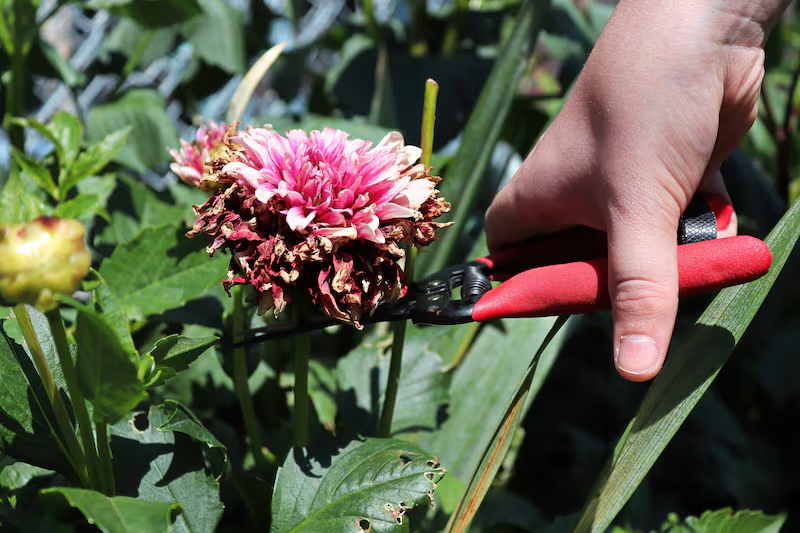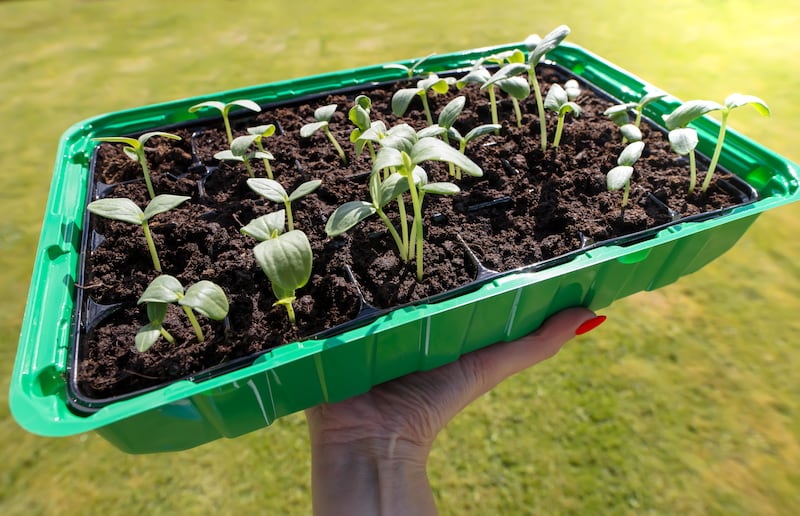There is a certain day in the calendar year, a date that marks the dividing line between its two halves, whose significance as an important horticultural turning point is not lost on experienced gardeners. Known as the summer solstice in the northern hemisphere, it was Thursday, June 20th, the longest day and shortest night of the year, when the North Pole was at its greatest tilt towards the sun.
Much as for humankind on whom it has a modulating effect as regards our mood, health, wellbeing, performance, alertness, cognitive powers and sleep patterns, plants’ circadian clocks respond in a myriad of complex ways to natural light. Long days typically support the process of photosynthesis and vegetative growth in the form of root, stem and leaf production. Shortening days and lengthening nights, by comparison, typically trigger a gradual slowing of the above as plants turn their attention to flowering, fruiting and setting seed in preparation for autumn and winter.
Both the slowing pace and changing manner of growth in our gardens and allotments that follows the summer solstice is already evident by July when the freshness, youth and lusty vitality of early summer is replaced by something altogether more mellow.
That transformation can also be seen in our parks, hedgerows, woodlands and in the wild, as proven by a series of recent international scientific studies.
READ MORE

One, published earlier this year in Nature Plants which examined the remarkably co-ordinated responses of beech tree populations right across Europe to the occurrence of the northern hemisphere’s summer solstice, vividly describes the latter as the “starting gun” or “celestial cue” to which beech trees are jaw-droppingly sensitive no matter which part of the continent they grow in.
Researchers were also amazed to discover that those mere few minutes less daylight in the days immediately after the solstice were enough to sharply change the trees’ growth responses to subsequent weather patterns, particularly in terms of temperature. This in turn played a key role in synchronising their production of seed and helps to explain the mystery of what are known as “mast years”, those years when beech trees produce a profuse amount.
So what does all of the above mean for Irish gardeners? It means that if you still have young plants and sturdy seedlings in trays and liners waiting to get their toes in the ground then you need to get a move on if they are to make good growth. If you’ve put off sowing seed of hardy biennials and perennials then hurry it along.
The same goes for taking softwood cuttings whose quick readiness to root at this time of year is because they are filled to bursting point with plant hormones, something less true of semi-hardwood cuttings taken later in the season, and less true again of hardwood cuttings taken in autumn. It means that the frothy, floaty, giddy-with-youth confection that is the Irish garden in early summer has already passed for another year, something that I always gauge as much by the cow parsley flowers fading from the hedgerows as the lupins starting to set seed.

Much like Europe’s beech trees it also means that we can start gradually turning our attentions away from late spring and early summer’s busy hustle and bustle of seed sowing and planting to instead concentrate on the jobs that are a natural part of the late summer garden.
These include harvesting home-grown fruit and vegetables, for example, and deadheading and liquid feeding to help prolong the show of blooms. They include weeding and hoeing borders and beds to support healthy plant growth as well as watering our plants when and if required, but always with respect for it as a precious, finite resource. They also include home seed-saving, that most quintessential and rewarding of late summer garden tasks.
Freed from the fiercely urgent demands of the spring and early summer garden, we can also, both literally and figuratively, allow ourselves time to smell the roses. Or if we don’t have roses but dearly wish we did then to instead make careful note of what we’d like to have growing in our gardens this time next year.
[ What every Irish garden needs: exceptional but hardy and resilient plantsOpens in new window ]
Better again, seek out some inspiration in the form of clever design ideas and winning plant combinations by visiting some of the great Irish gardens open to the public this summer. You’ll find many of them listed in the Kilkenny-based garden writer Shirley Lanigan’s newly-updated and excellent book The Open Gardens of Ireland, published by Butterslip Press this month and available in most good Irish bookshops and garden centres.
From tiny contemporary city plots to the sprawling historic demesnes of centuries-old castles and grand country houses, this comprehensive guide to a total of 375 Irish gardens is a wonderful distillation of Lanigan’s long fascination with the very personal art and craft of garden-making. It’s also a powerful reminder of the value of the hivemind and the wealth of knowledge it contains. As the brilliant late garden designer and author Russell Page put it in his classic book The Education of a Gardener, “I never saw a garden from which I did not learn something and seldom met a gardener who did not, in some way or another, help me.”
This Week in the Garden
The erratic weather and cool night temperatures have been challenging for heat-loving summer bedding plants whose rapid growth is typically dependent on plenty of warmth and sunlight. Cosset them until conditions hopefully improve later in the month by keeping them regularly deadheaded and liquid-fed and protecting them from slug damage. If container-grown plants are struggling try temporarily repositioning the pots close to a south or west-facing house wall for some extra warmth and shelter.
Aphids often appear on the tips of soft green plant shoots at this time of year, which can be alarming for some gardeners, but if you wait it out then they’ll usually be eaten by their natural predators which include ladybirds, ground beetles, earwigs, hoverflies and parasitic wasps. Alternatively try squashing them between your finger and thumb or washing them off with a fine jet of water.
Dates for your Diary
Today, Saturday, June 22nd (11am-5pm), Tullynally Castle Plant Fair, Castlepollard, Co Westmeath, see tullynallycastle.ie;
Saturday, June 29th (3pm-5pm), Delgany & District Horticultural Society Rose Show, St Patrick’s Primary School on Church Road, Greystones, Co Wicklow, featuring a wide range of plants, vegetables, sweet peas and roses. New members and exhibitors very welcome, please contact ddhs.showentries@gmail.com


















